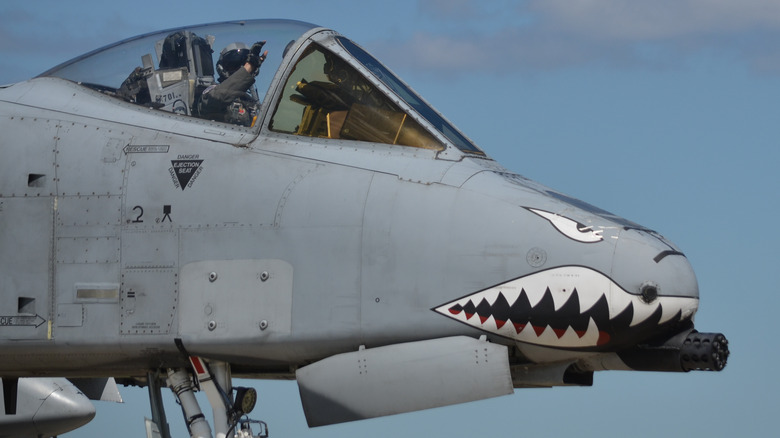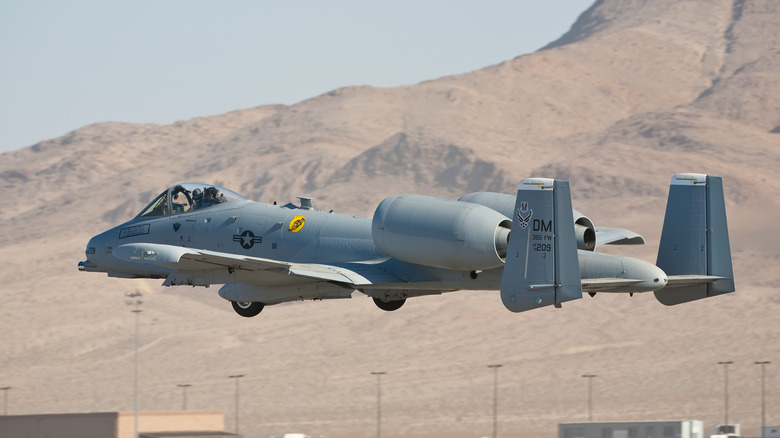Why The U.S. Air Force Wants To Retire The Legendary A-10 Warthog
At a recent Air and Space Forces Association (AFA) event in Colorado, the U.S. Air Force announced the retirement of 21 jets from its fleet of 281 A-10 Warthogs. Although the full name of the fighter jet is the Fairchild Republic (now Grumman) A-10 Thunderbolt II, it's widely known by its nickname "Warthog" or sometimes just "Hog." The origin of the nickname is debatable but is mostly attributed to one of two things: the jet's physical appearance, complete with eyes and a mouthful of teeth, or the thundering "BRRRRRT" sound that its main gun creates when fired.
The Warthog's specialty is Close Air Support. That is, protecting combat troops on the ground, primarily against tanks and other armored vehicles. To that end, there's a titanium underbelly designed to protect the pilot from injury and redundant flight control systems that allow the plane to limp home even if significantly damaged.
Power is supplied by a pair of non-afterburning General Electric turbofan engines, providing 9,065 pounds of thrust each. The design of the aircraft allows it to be flown with one of the engines inoperable. The flying range is approximately 800 miles and the maximum speed is 420 mph, although cruising speed is typically lower. The Warthog's main armament is a GAU-8 Avenger, a seven-barrel Gatling gun that fires 11-inch long incendiary rounds at a rate of 2,100 to 4,200 rounds per minute.
Ground wars are growing less common
The jet's slow speed and excellent low-altitude maneuverability were famously used to provide troop cover during Operation Desert Storm in the 1990s, as well as the more recent Operation Iraqi Freedom and Operation Enduring Freedom in Afghanistan. However, that low speed which was previously an asset has now become a liability. Manufactured between 1976 and 1984, Air Force officials stated that the Warthog is too outdated and too singularly focused to survive conflicts with modern air defenses such as those possessed by China.
The request to phase out the A-10 Warthog is not a new one. Previous attempts to retire the A-10 were continually rejected by Congress under the guise that no other aircraft is capable of protecting ground troops as effectively. But nowadays, the U.S. no longer employs large groups of ground troops, favoring newer technology like hypersonic missiles and warplanes instead. Fittingly, the fiscal 2023 budget finally approved replacing 21 of the jets.
The first 21 jets to be phased out will all come from the Air National Guard squadron in Indiana, to be replaced by an equal number of F-16 fighter jets. Air Force Chief of Staff Gen. CQ Brown commented that "the Air Force hopes to continue that momentum" with all A-10 Warthogs retired by the year 2029.

